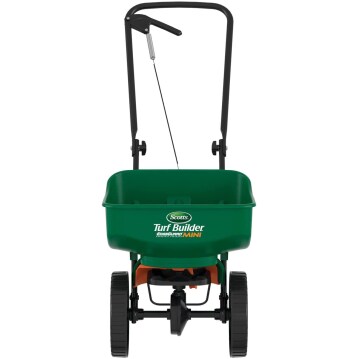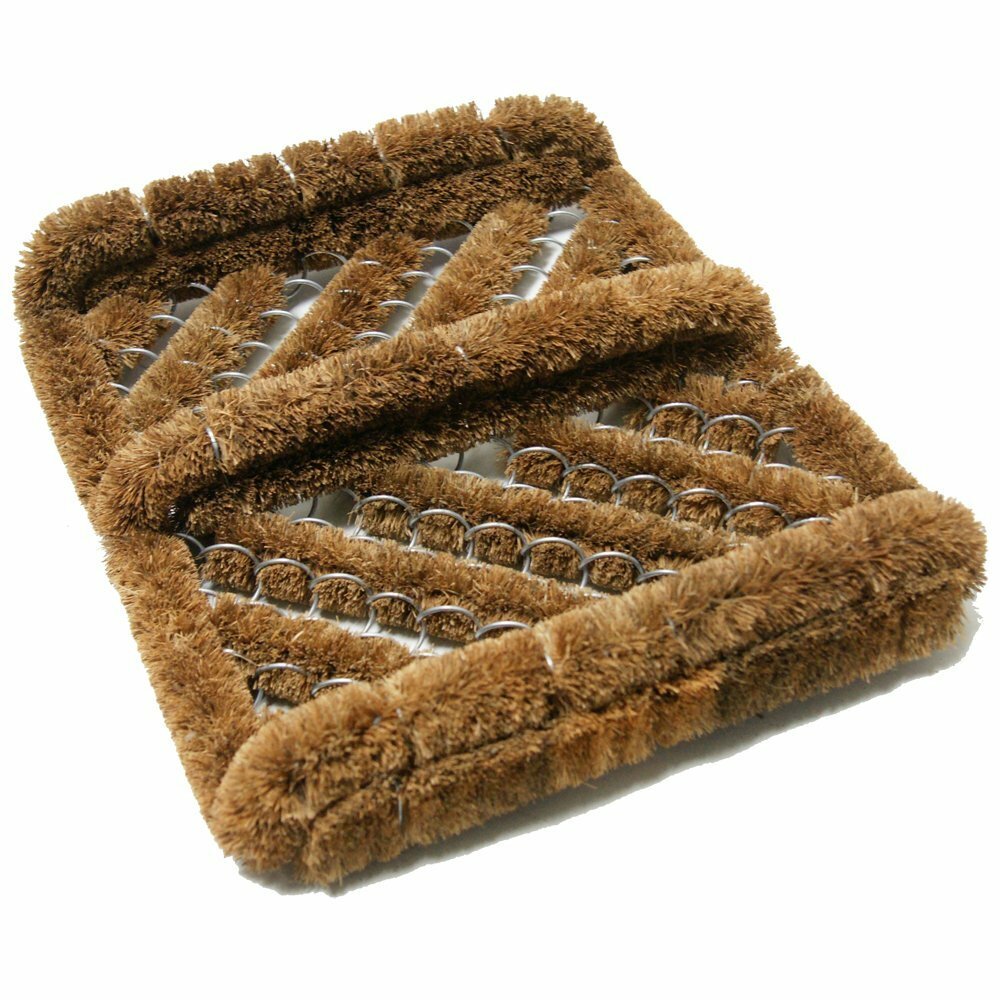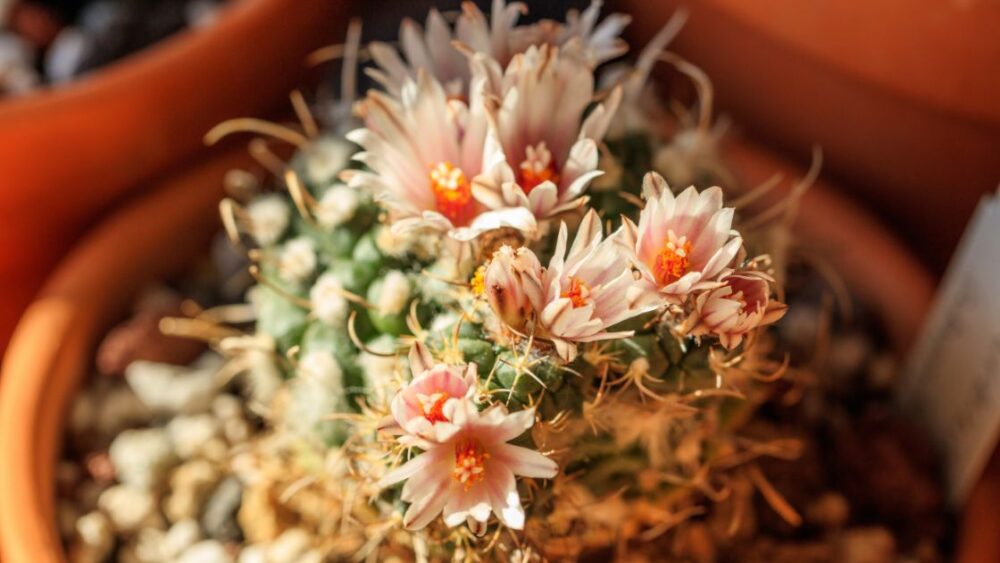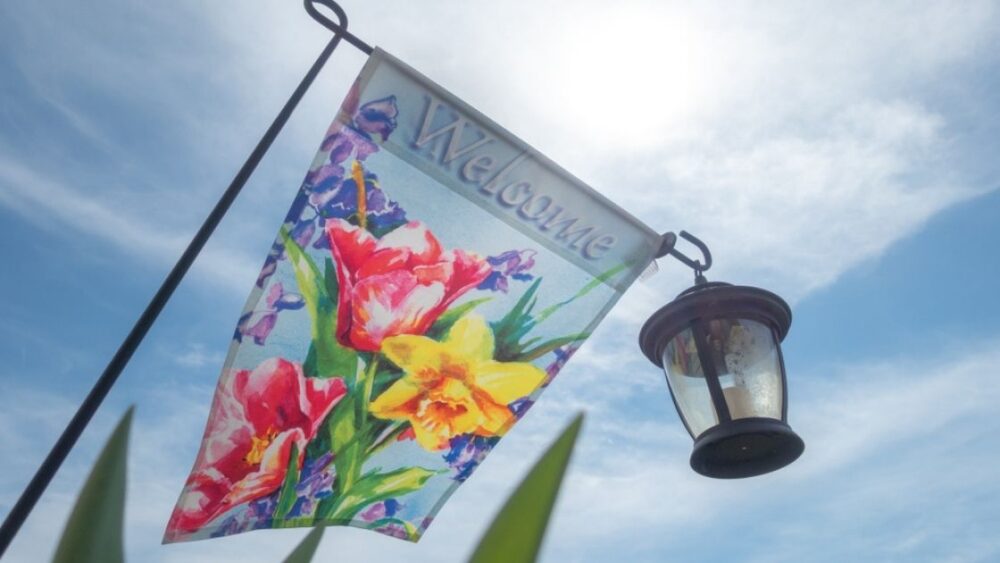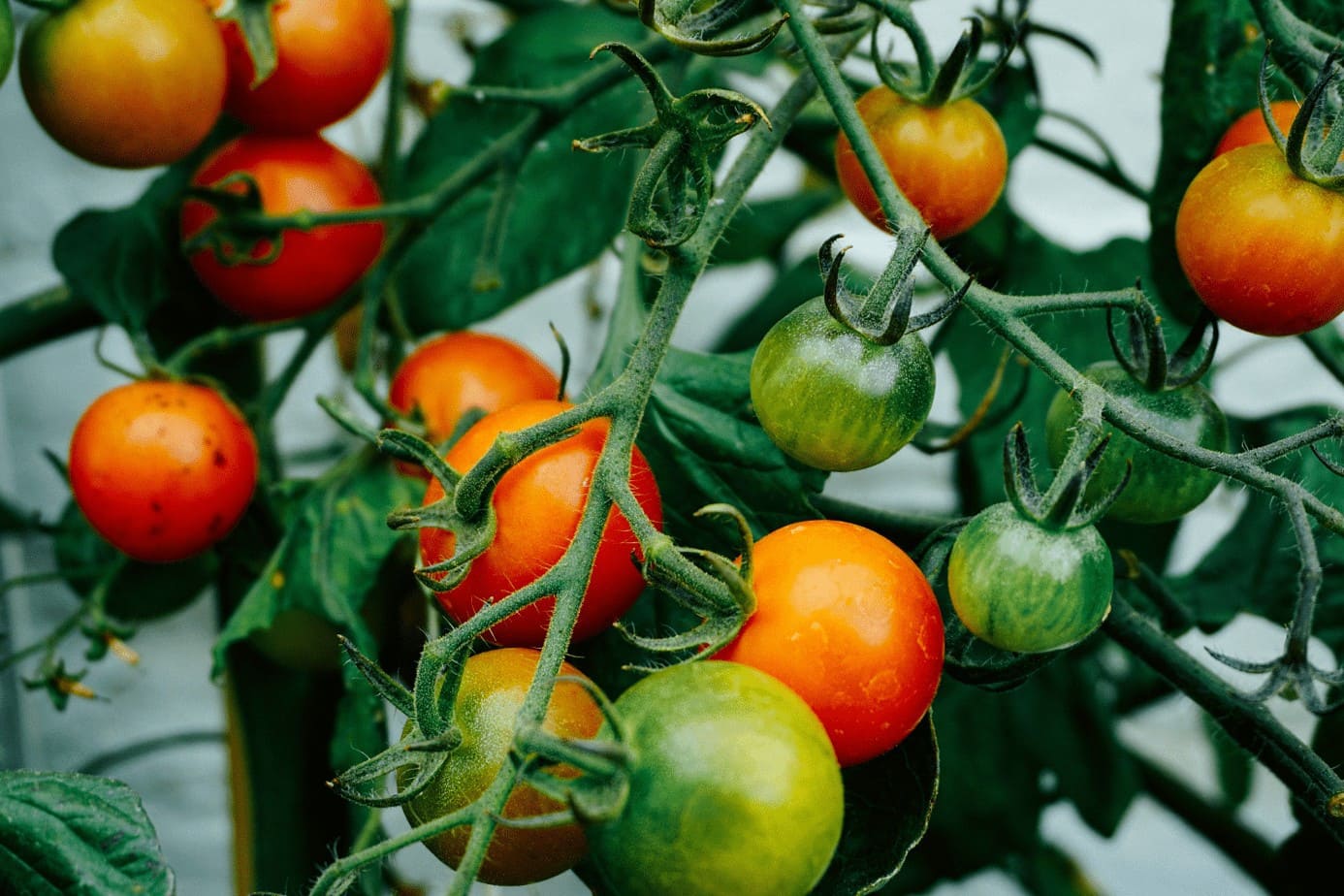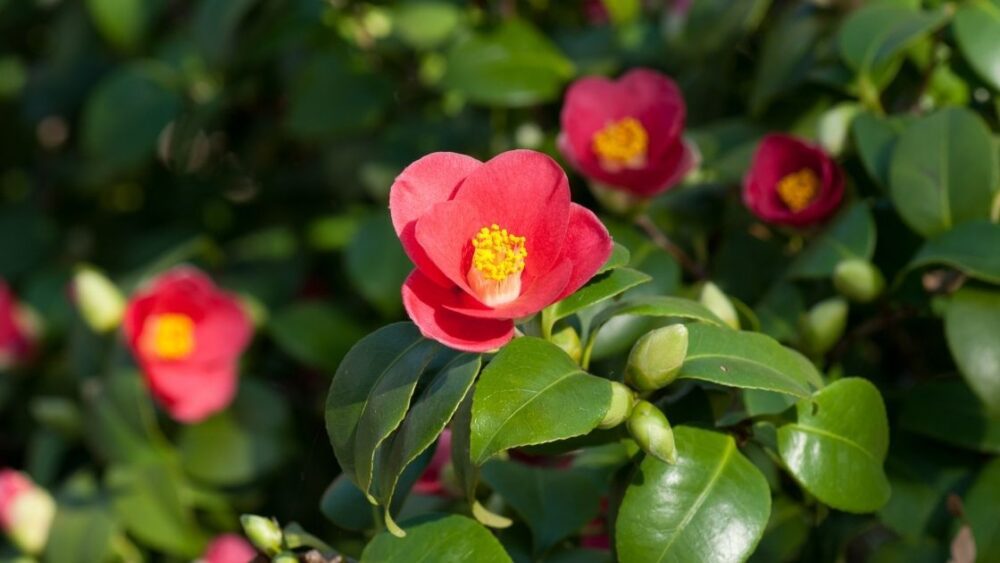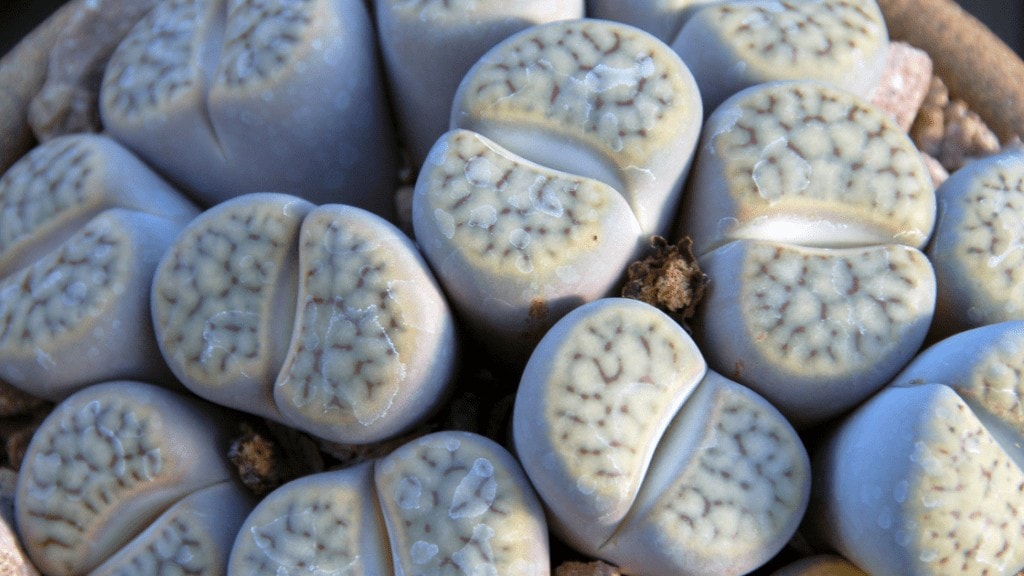
Living stone succulents belong to the lithops genus and are very popular among succulent lovers. Although they are very widespread throughout the dry deserts of South Africa, they are considered a novelty plant in most of the world, mostly because of their interesting shape and attractive colors. Caring for living stones is not difficult, but a lot of unexpected problems can arise if you don’t provide them with their basic requirements, such as a suitable soil, bright light and an annual growth cycle, which includes a rest period.
What Factors Can Lead To Problems With Your Living Stone Succulents?
All succulents are used to dry, arid conditions, but lithops is on the extreme end of the spectrum – watering those peculiar succulents more than even once per month can turn out to be too much.
As is the case with many succulents, taking too much care of them can backfire – watering your lithops often, moving it around a lot or fertilizing it can all cause more problems than they solve.
Browse our Affiliate Products
Even when the conditions are seemingly ideal, living stones may sometimes start mysteriously dying and shriveling. This is in part because the lithops genus contains about 50 species, many of which look similar. Most of those species have to be watered only once every 3-4 months or less. Some, however, do best when they’re watered every few weeks.
This is also dependent on the soil your lithops are growing in and its composition. So in the end, there are a few factors beyond your control and your living stone may start dying even if you do everything right. In that case, the only thing you can do is start experimenting with your watering frequency and hope for the best!
If all else fails, Amazon offers a wide range of Lithops (living stone succulents) as shown below.
What Problems Are You Likely To Encounter When Caring For Living Stones (Lithops)?
When their conditions aren’t optimal, living stones start to develop various unspecific symptoms – they start shriveling, tilting on their side, developing ‘wounds’ or becoming pale.
It’s difficult to identify the exact cause of most of those problems and it’s best to correct the problem holistically, by making sure that every single growth requirement is met and the succulent isn’t being moved around or watered too much or too little.
Living stones have an interesting growth cycle – they ‘renew’ their leaves. This is meant to happen right after the succulent blooms, but can sometimes occur unexpectedly if the plant gets confused, making you think that it’s dying, even though it’s not. The old leaves will start shriveling and the succulent will use all the ‘juice’ contained in them to create new leaves.
This can be brought on by seasonal and daylight changes in your location, which the plant is not used to. It can also occur if you move the plant around too much, or because of extreme ambient temperature changes.
Optimal Growing Conditions For Lithops
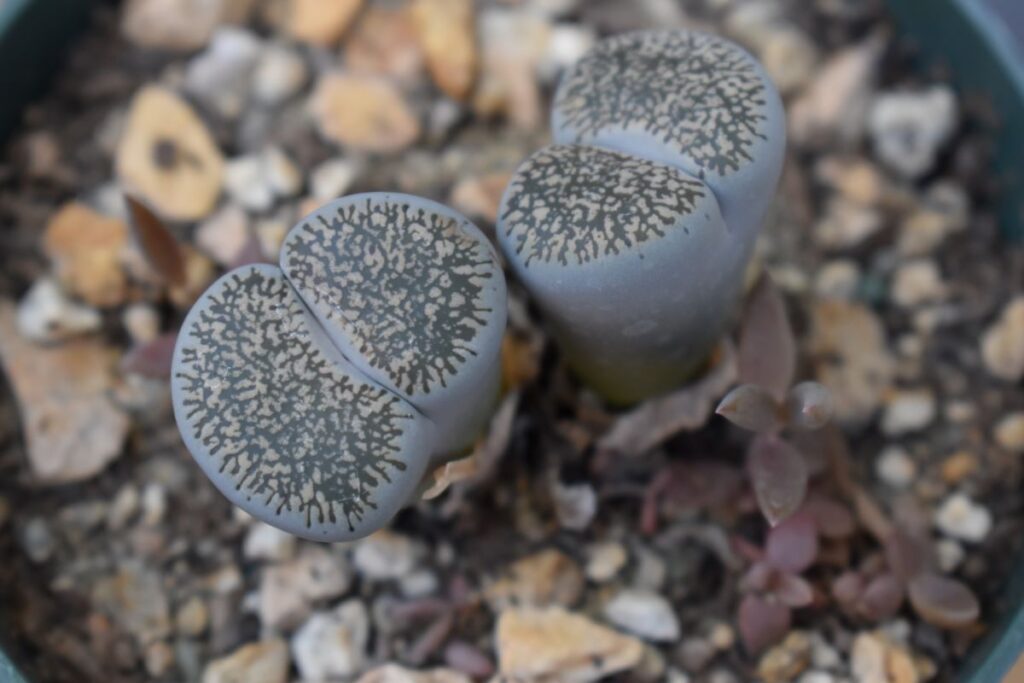
Living stones have optimal growing conditions that are similar to those of other succulents – infrequent watering, warm and sunny weather and a well-draining soil containing a lot of sand or perlite. Let’s explore every factor in more detail:
Light Intensity
Living stones like high light intensities. The good news is that they are very small, making them suitable for small LED grow lights. High light intensity is essential during the dormancy period of the plant, when it doesn’t absorb much water from the soil, but instead manufactures sugars and stores energy for the approaching blooming cycle. Insufficient light will also cause the succulent to lose its vibrant colors and it will appear dull or even slightly translucent.
Temperature
Like all succulents, lithops loves hot temperatures during the summer. In its natural habitat, the high temperatures during the day can reach 120F(50C)! Even in such high heat, the plant loses only a tiny amount of water from its leaves. This well illustrates why it needs to be watered only a few times a year when grown indoors in the much more conservative temperatures of the northern hemisphere.
Soil
Cactus potting mixes work well for lithops, but the addition of a bit more sand is recommended. The soil should be well-draining and succulent lovers often create their own mixes, the simplest one consisting of equal parts compost and sand. This 50/50 mix is also very suitable for germinating lithops seeds – something you may want to try instead of purchasing mature plants in a pot.
Since soil is the main catalyst in the majority of problems, Amazon offers different soils that are suited for succulents as shown below.
Watering
There is a lot of mixed and contradictory advice when it comes to how often you should water lithops. The standard advice is to water it once every few months and completely stop watering when the dormancy period arrives. The dormancy period of lithops occurs during the hot summer months and not during the winter.
A simple rule is to only water when the leaves of the lithops start getting dehydrated. This is easy enough to notice – they will start becoming slightly wrinkly and will be softer when you gently squeeze them. When that happens, water the succulent
thoroughly and then wait until the leaves start feeling dehydrated again, which will probably be in a few months.
There is an important exception to this rule – as we already mentioned, living stones like to replace their leaves with new ones after each blooming cycle. When that starts to occur, the old leaves will start getting wrinkly as their juice gets ‘sucked up’ back into the root system and is used for putting out new growth.
When that initially happens, it may seem like the plant is just dehydrated and you may want to water it. Don’t! This is the worst time for watering and doing so can actually kill the plant. That’s because as the plant starts to replace its leaves, the root system goes dormant and is very prone to rotting. Learning to identify whether livings stones need water or they are simply replacing their leaves is one of the most important skills involved in caring for your lithops.
Indoors vs. Outdoors
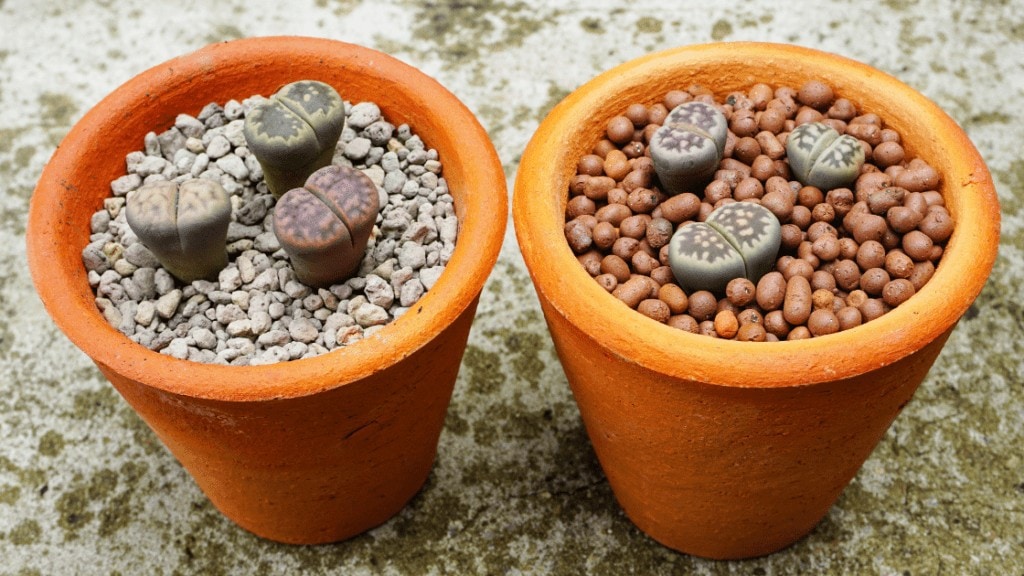
Living stones do very well when placed outside during the summer months. The only thing you should be careful of is that they have some sort of cover to protect them from the rain – forgetting about your lithops and letting it get soaked wet for more than a few days can easily drown and kill the succulent. In the winter, the plant should be kept at a temperature of around 60F (15C) and it should still get plenty of light.
What Should You Do If Your Living Stones Appear to Be Dying?
First, make sure that the problem isn’t caused by pests – Thrips, Mealybugs or other difficult to see insects can all infest a living stone plant and start drinking its juices. Those pests usually thrive only in high humidity areas and the problem can be largely avoided by putting your living stone succulent in a dry place.
Because lithops has no problems enduring high temperatures and doesn’t easily wilt like other plants, pests can sometimes be dealt with by carefully placing the plant in an oven heated to around 110F (45C) for 10 minutes.
If your living stone plant appears to be dying, but there are no visible pests, you should determine what stage of growth it’s in. Have you recently moved the plant to a warmer location or put it outside in the sun? Have you watered it recently? If the plant hasn’t been watered for more than a month or two and it appears to be wrinkling a bit, the problem may be quickly corrected by just watering it thoroughly.
Make sure that the plant isn’t just preparing for putting out new growth – if it has just flowered, wrinkling of the leaves is very natural and you shouldn’t water at all – give it some time and you’ll soon notice the new growth starting to replace the old wrinkly leaves.
If your plant is dying and you’re sure it’s not replacing its leaves and you’ve watered it recently, then the problem may be in the root system. There is little you can do in this case except wait and hope for the best. Lithops succulents have very delicate and shallow root systems and if root rot has set in, the whole root can be quickly destroyed.
Sometimes, the plant can recover after re-growing some healthy roots and this usually requires less watering in order to prevent the new growth from rotting as well.
If the leaves of the succulent are hard and plump but it appears to be losing its vibrant colors, the problem is almost certainly a lack of sufficient light. Many people don’t realize that the light intensity on a window sill is often much lower than outside. Unless you have a south-facing window which receives a lot of direct sunlight throughout most of the day, purchasing a suitable LED grow light may be your best option to keep your succulent happy.
in addition, if you require more one on one information, Houzz.com has a ongoing discussion about these unique succulents. You can read more by clicking the link. Houzz.com/discussions/1822076/dying-lithops
How Can You Compensate For Unfavorable Growing Conditions?
You can’t do much to compensate for a location that is too dark – all plants photosynthesize and need sufficient light intensity to manufacture the sugars necessary for growth. If you live in a colder area, heating pads can be used to provide some heat and simulate a summer climate. A properly positioned LED grow light can supply both light and heat to perfectly simulate a hot sunny summer.
Do All Lithops Species Have The Same Growth Requirements?
Different lithops species have different leaf areas and different root lengths which makes their requirements somewhat variable. Usually, it’s best to go by the appearance of the succulent and not by a timing schedule – keep an eye out any wrinkling which will tell you that it’s is dehydrated.
There isn’t a lot of information on the different lithops species and their specific requirements and all of them are usually simply labeled as ‘living stones’. This is part of the reason why they can be tricky to grow and require some observation and common sense, rather than following rigid directions.
Final Thoughts
Living stones are fascinating succulents which are very easy to grow – you don’t need to do much, except place them in a sunny area and water every few months. However, they have a relatively complicated growing cycle and it’s best to leave them without any watering during the summer, when their roots go dormant.
Since living stones are used to a very different climate and environment compared to the one in most of the northern hemisphere, they can sometimes start dying unexpectedly. If that happens, make sure that the plant isn’t just replacing its leaves, in which case, waiting is all that is required!



